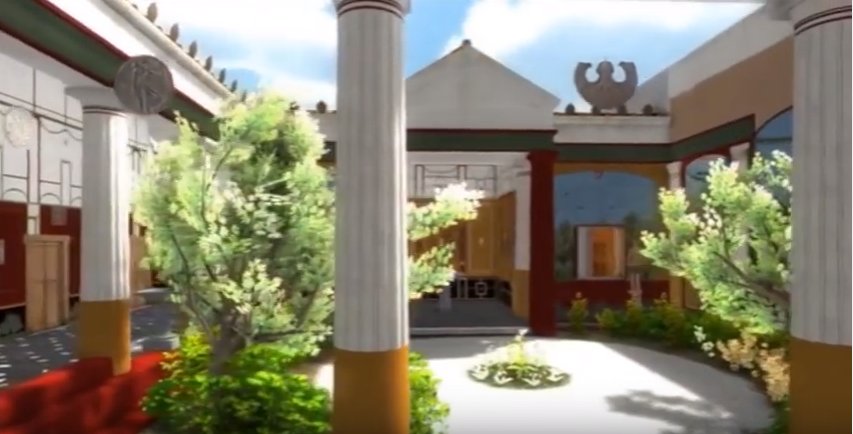MessageToEagle.com – On the morning of August 24, 79 AD, Mount Vesuvius erupted and broke its centuries-long silence. Its great cloud of hot ash, stones and poisonous gases completely buried the whole Roman city of Pompeii and for more than seventeen centuries, it would remain lost, forgotten, sealed and preserved in a time capsule. Before the devastating volcanic eruption, Pompeii was a flourishing ancient city with magnificent houses, streets and shops.

A group of researchers from the Lund University in Sweden decided to find out what houses in ancient Pompeii looked it and as you are about to see, unique 3D-technology gives us an astonishing glimpse of the past.
The Swedish Pompeii Project managed by the Department of Archaeology and Ancient History in Lund includes a new branch of advanced digital archaeology, with 3D models demonstrating the completed photo documentation.

Credit: Image courtesy of Lund University
To reconstruct the ancient Pompeii houses, scientists scanned the city district and the first 3D models of the ruin city have now been completed.
The researchers have even managed to complete a detailed reconstruction of a large house, belonging to the wealthy man Caecilius Iucundus.
“By combining new technology with more traditional methods, we can describe Pompeii in greater detail and more accurately than was previously possible,” says Nicoló Dell´Unto, digital archaeologist at Lund University.
Among other things, the researchers have uncovered floor surfaces from AD 79, performed detailed studies of the building development through history, cleaned and documented three large wealthy estates, a tavern, a laundry, a bakery and several gardens.
In one garden, they discovered that some of the taps to a stunning fountain were on at the time of eruption — the water was still gushing when the rain of ash and pumice fell over Pompeii.
See also:
10 Reconstructions Of Ancient Cities, Monuments And Sacred Sites
Facial Reconstruction Of Ava: 3,700-Year-Old Bronze Age Woman
Facial Reconstruction Of ‘Mrs Getty’ – A High-Status Young Anglo-Saxon Woman
Is This The Face Of A 16th Century Pirate Or Criminal?
The researchers occasionally also found completely untouched layers. In a shop were three, amazingly enough, intact windows (made out of translucent crystalline gypsum) from Ancient Rome, stacked against each other.
By studying the water and sewer systems they were able to interpret the social hierarchies at the time, and see how retailers and restaurants were dependent on large wealthy families for water, and how the conditions improved towards the end, before the eruption.
An aqueduct was built in Pompeii, enabling residents to no longer having to rely on a few deep wells or the tanks of collected rainwater in large wealthy households.
“The villa remains one of the great buildings of the ancient world and it should certainly be excavated,” according to Robert Fowler, professor of Greek and dean of arts at Bristol University.
Anyone interested in ancient history has undoubtedly seen a number of prehistoric ruins that were once part of magnificent ancient monuments, cities and sacred sites.
Today, these ruins are all that is left of buildings raised by powerful and great ancient civilizations that no longer exist. Have you ever wondered what these ancient places looked like when they existed? You can find out here
MessageToEagle.com






